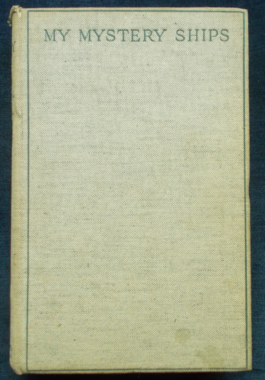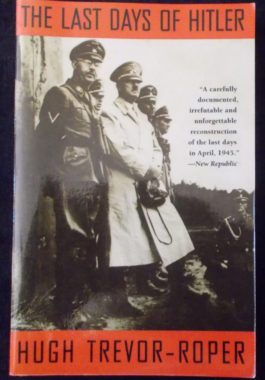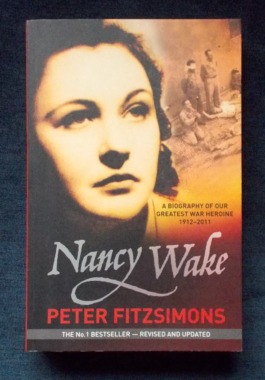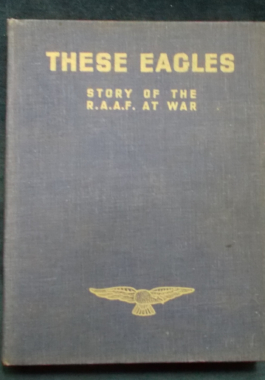-
 World War I saw a significant and tragic change to the prosecution of war. Allied passenger and merchant ships were blatantly attacked by the enemy, resulting in dreadful civilian losses. The mystery ships were then created - they were disguised as peaceful merchant ships, but which were equipped with guns hidden until a few seconds before opening fire on enemy submarines. They cruised on the trade routes, hoping to encounter enemy submarines and attract them to attack, and when the submarine came to the surface, bombard her with heavy armament. The guns had to be accurate, necessitating rigid drill and discipline - one officer or man making an error would give the show away and risk the ship and crew. This book, first published in 1928, is the first to tell the real story of life on board and the stories of attacks on and by submarines as well as describing the life on board - the discomforts, difficulties and dangers of this method of fighting back. There was also an explanation of the attraction this form of service has for men who were independent and courageous with a strict sense of moral duty. The crew were constantly on alert: one false step could lead to the ship being torpedoed, with those left to try and save themselves or being taken prisoner; discipline and readiness for immediate action were strict from the moment of leaving harbour until safe within the harbour on return. Campbell served on the mystery ships from 2015 to 2017, beginning as a Lieutenant-Commander R.N., and ending that part of his naval career as a Captain R.N. with a V.C. and three D.S.O.s. A little-known and over-looked part of war history. With illustrations by Lieutenant J.E. Broome, R.N.
World War I saw a significant and tragic change to the prosecution of war. Allied passenger and merchant ships were blatantly attacked by the enemy, resulting in dreadful civilian losses. The mystery ships were then created - they were disguised as peaceful merchant ships, but which were equipped with guns hidden until a few seconds before opening fire on enemy submarines. They cruised on the trade routes, hoping to encounter enemy submarines and attract them to attack, and when the submarine came to the surface, bombard her with heavy armament. The guns had to be accurate, necessitating rigid drill and discipline - one officer or man making an error would give the show away and risk the ship and crew. This book, first published in 1928, is the first to tell the real story of life on board and the stories of attacks on and by submarines as well as describing the life on board - the discomforts, difficulties and dangers of this method of fighting back. There was also an explanation of the attraction this form of service has for men who were independent and courageous with a strict sense of moral duty. The crew were constantly on alert: one false step could lead to the ship being torpedoed, with those left to try and save themselves or being taken prisoner; discipline and readiness for immediate action were strict from the moment of leaving harbour until safe within the harbour on return. Campbell served on the mystery ships from 2015 to 2017, beginning as a Lieutenant-Commander R.N., and ending that part of his naval career as a Captain R.N. with a V.C. and three D.S.O.s. A little-known and over-looked part of war history. With illustrations by Lieutenant J.E. Broome, R.N. -
 To many people the most glamorous of aeroplanes is the fighter, by the idea of men flying alone high above the earth in the open cockpit of First World War aircraft, as they fought the gaily-coloured Fokker, Albatross and Pfalz of the German Air Service. This 'feeling for the fighter' was strengthened in 1940 when the Hurricanes and Spitfires of the Royal Air Force saved Britain from German invasion. This book describes the fighters of both wars; there is also the entire development of the fighter from its primitive beginnings up to the supersonic age. The most significant fighters of Britain, France, Germany, Italy, the United States, Japan and the U.S.S.R. are among those featured. Illustrated with black and white photos.
To many people the most glamorous of aeroplanes is the fighter, by the idea of men flying alone high above the earth in the open cockpit of First World War aircraft, as they fought the gaily-coloured Fokker, Albatross and Pfalz of the German Air Service. This 'feeling for the fighter' was strengthened in 1940 when the Hurricanes and Spitfires of the Royal Air Force saved Britain from German invasion. This book describes the fighters of both wars; there is also the entire development of the fighter from its primitive beginnings up to the supersonic age. The most significant fighters of Britain, France, Germany, Italy, the United States, Japan and the U.S.S.R. are among those featured. Illustrated with black and white photos. -
 In September 1945, the fate of Hitler was a complete mystery. He had simply disappeared, missing for four months. The author, a British counter-intelligence officer, was given the task of solving this mystery. His brilliant piece of detective work not only proved that Hitler had killed himself in Berlin, but also produced one of the most fascinating history books ever written, telling the extraordinary story of those last days in the Berlin Bunker. Chapters include: Hitler and His Court; Hitler In Defeat; The Court in Defeat; Crisis and Decision; Siege of the Bunker. Et Tu, Brute. The Death of Hitler. Epilogue.
In September 1945, the fate of Hitler was a complete mystery. He had simply disappeared, missing for four months. The author, a British counter-intelligence officer, was given the task of solving this mystery. His brilliant piece of detective work not only proved that Hitler had killed himself in Berlin, but also produced one of the most fascinating history books ever written, telling the extraordinary story of those last days in the Berlin Bunker. Chapters include: Hitler and His Court; Hitler In Defeat; The Court in Defeat; Crisis and Decision; Siege of the Bunker. Et Tu, Brute. The Death of Hitler. Epilogue. -

Nancy Wake: Peter Fitzsimons
$15.00In the early 1930s, Nancy Wake was a young woman enjoying a bohemian life in Paris. By the end of the Second World War, she was the Gestapo's most wanted person. As a naïve, young journalist, Nancy witnessed a horrific scene of Nazi violence in a Viennese street. From that moment, she declared that she would do everything in her power to rid Europe of the Nazis. What began as a courier job here and there became a highly successful escape network for Allied soldiers, perfectly camouflaged by Nancy's high-society life in Marseille. Her network was soon so successful - and so notorious - that she was forced to flee France to escape the Gestapo, who had dubbed her "the white mouse" for her knack of slipping through its traps. But Nancy was a passionate enemy of the Nazis and refused to stay away. Supplying weapons and training members of a powerful underground fighting force, organising Allied parachute drops, cycling four hundred kilometres across a mountain range to find a new transmitting radio - nothing seemed too difficult in her fight against the Nazis.Illustrated with black and white photographs. -

Vietnam: Alan Watt
$15.00This Australian analysis was the fourth in a series of background books sponsored by the Australian Institute of International Affairs. This book dispassionately consider the much-discussed factual and legal consequences of the 1954 international agreements with an appraisal of the circumstances of Australian and American intervention as well as the arguments for and against involvement. -

The author has written the full length story of the Malayan campaign of World War II from the 'sharp end' of the fighting and as a prisoner-of-war, one of thousands who suffered for three years. He takes the reader through bewildering, disordered days and nights of fighting to humiliation at the hands of the Japanese, versed in all the arts of abasing and breaking prisoners by starvation and neglect. The illustrations by fellow prisoner Ronald Searle (St. Trinians, Down With Skool,Whizz For Atomms, How To Be Top, etc.) are poignant, forceful and make reality even more real. This really is war and imprisonment as it happened.
-

 With stories, sketches and photographs from the servicemen and women of the Royal Australian Air Force. No 'Boys Own' adventures here - these are real tales of man's condition, actions and reactions in wartime. From Out Of Control: To watch Mother Earth rushing up to meet you while you are fighting a spine at a mere few thousand feet does not increase your expectation of a long and useful life... There's the ground crew blokes, the high-altitude men, the U-boat spotters, the Old New Contemptibles; the ladies of the W.A.A.A.F get a salute from the boys. There's even cartoons - such as one would expect from an Aussie view of things. Illustrated with sketches, black and white photographs and colour plates.
With stories, sketches and photographs from the servicemen and women of the Royal Australian Air Force. No 'Boys Own' adventures here - these are real tales of man's condition, actions and reactions in wartime. From Out Of Control: To watch Mother Earth rushing up to meet you while you are fighting a spine at a mere few thousand feet does not increase your expectation of a long and useful life... There's the ground crew blokes, the high-altitude men, the U-boat spotters, the Old New Contemptibles; the ladies of the W.A.A.A.F get a salute from the boys. There's even cartoons - such as one would expect from an Aussie view of things. Illustrated with sketches, black and white photographs and colour plates. -
 What possessed the German people to embrace Hitler and his politics of mass murder? The author, an eminent historian, points to Goebbels' brilliant manipulation of the mass murderer as the key to the Fuhrer's success. Goebbels' diabolical propaganda machine exploited all communication: radio, posters, magazines, documentaries, brochures and spectacular films in the drive to capture the minds of millions. By the use of patriotic myth and tradition, a nation fell under a mass hypnosis on a scale never before paralleled. Illustrated with black and white photos.
What possessed the German people to embrace Hitler and his politics of mass murder? The author, an eminent historian, points to Goebbels' brilliant manipulation of the mass murderer as the key to the Fuhrer's success. Goebbels' diabolical propaganda machine exploited all communication: radio, posters, magazines, documentaries, brochures and spectacular films in the drive to capture the minds of millions. By the use of patriotic myth and tradition, a nation fell under a mass hypnosis on a scale never before paralleled. Illustrated with black and white photos.




